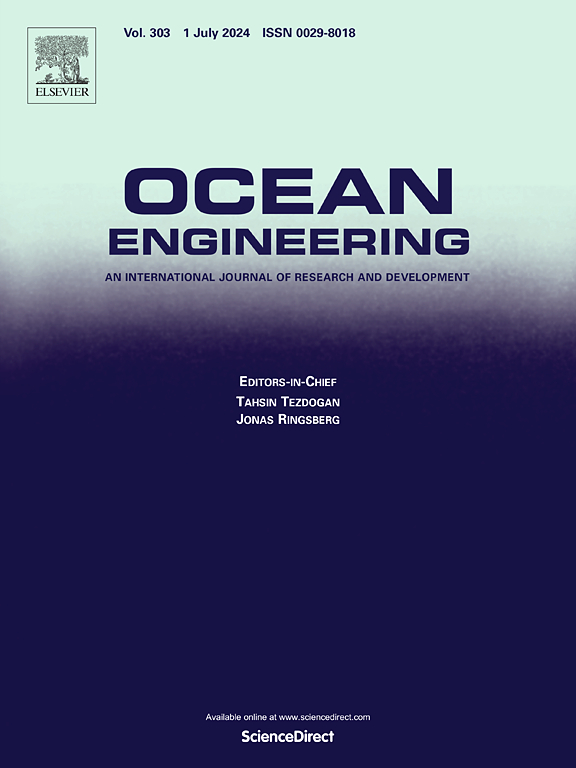Optimizing deployment processes and control strategies for marine submerged buoy system: A computational approach
IF 4.6
2区 工程技术
Q1 ENGINEERING, CIVIL
引用次数: 0
Abstract
This study addresses the underwater deployment methods of submerged buoy systems, aiming to meet the challenges posed by highly variable underwater environments. Submerged buoy systems, deployed to target sea regions for extensive detection and data collection tasks, are advanced modern monitoring tools. Compared to traditional surface deployment methods, underwater deployment can avoid disturbances caused by ship-generated waves and surface wave loads, meeting the precision requirements of acoustic detection instruments. This paper proposes a novel underwater deployment method tailored to actual engineering scenarios and provides a detailed explanation of the hydrodynamic modeling approach for deploying submerged buoy systems to anchorage points. Key aspects discussed include the selection of component models, the application of loads during deployment, precise positioning, and the control of tension and oscillations of submerged buoys. Simulation results show that this method minimizes the frequency range where environmental and system oscillations intersect, effectively controlling submerged buoy oscillations and enhancing the performance of subsequent monitoring system signals. The findings of this study are significant for improving submerged buoy deployment techniques, offering valuable theoretical and practical insights.
求助全文
约1分钟内获得全文
求助全文
来源期刊

Ocean Engineering
工程技术-工程:大洋
CiteScore
7.30
自引率
34.00%
发文量
2379
审稿时长
8.1 months
期刊介绍:
Ocean Engineering provides a medium for the publication of original research and development work in the field of ocean engineering. Ocean Engineering seeks papers in the following topics.
 求助内容:
求助内容: 应助结果提醒方式:
应助结果提醒方式:


